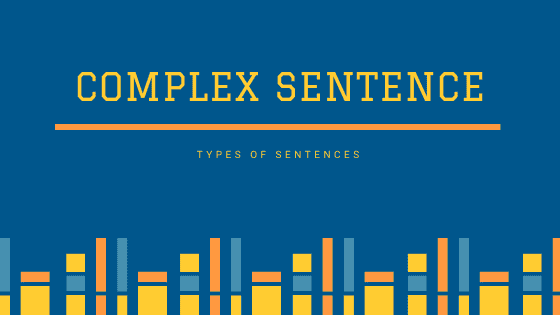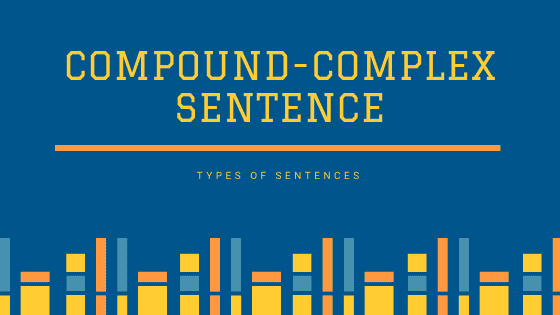What is a Compound Sentence?
There are four types of sentence structures. Namely, Simple sentence, Compound sentence, Complex sentence, and Compound-complex sentence. Compound sentence is one of these sentence structures. We know that a simple sentence has only one independent clause. A compound sentence consists of at least two independent, closely related clauses. It does not contain any dependent clause.
Prerequisites to comprehend this article
For grasping the contents of this article, it’s essential that you have sufficient knowledge of the following grammatical terms:
- Clauses
- Independent clause aka Coordinate clause/Main clause/Principal clause
- Linking words aka Connectives
Compound Sentence Structure
The Compound sentence generally consists of two independent clauses joined using a linking word (namely, coordinating conjunction, correlative conjunction, and conjugative adverb) or a semicolon.
Forming Compound sentences
We can form Compound sentences combining two closely related independent clauses using a linking word (such as, Coordinating conjunction, Correlative conjunction, and Conjugative adverb), or a semi column.
Forming Compound sentence using Coordinating conjunctions
Coordinating conjunctions are conjunctions used to link, words, phrases, clauses, or sentences of equal status. Here they are used to connect two independent clauses (also called coordinate clauses or main clauses.). There are only seven of them in English language. They are:
- For
- And
- Nor
- But
- Or
- Yet
- So
The mnemonic, FANBOYS, is useful to remember the seven coordinating conjunctions.
Compound sentences using Coordinating conjunction – “FOR”
When the second independent clause is the cause for the first clause, we use the Coordinating conjunction, “for” to link them.
Example:
- I took an umbrella, for I felt that it might rain.
Compound sentences using Coordinating conjunction – “AND“
“AND” is the most used coordinating conjunction. In the case of compound sentences, the contexts in which “AND” is used, are given hereunder.
a. When the two independent clauses are of equal value, we use “AND” to connect the two clauses.
Example:
- Pyramids are in Egypt, and Eiffel tower is in France.
b. When the action mentioned in the second independent clause occurs after that mentioned in the first clause, we use “AND” to connect the two clauses.
Example:
- The child saw his dear father coming, and he ran to the gate to meet him.
c. When the second independent clause is the result of the first clause, we use “AND” to connect the two clauses.
Example:
- It rained for days, and the fields were covered with green grass.
Compound sentences using Coordinating conjunction – “NOR”
We use the Coordinating conjunction,” nor”, when the first independent clause uses the negative words ‘neither’ or ‘never’. In this case, both the clauses do not happen.
Example:
- Neither my mother can attend the meeting, nor can I attend.
Note: Please note the subject- verb inversion in “can I”.
Compound sentences using Coordinating conjunction – “BUT”
When the second independent clause contrasts with the first, we use but conjunction to introduce the second clause.
Example:
- Mary loved John very much, but John could not reciprocate.
Compound sentences using Coordinating conjunction – “OR”
To join two independent clauses, that are alternative clauses, we use the coordinating conjunction, “or”
Example:
- Jack will go to London, or Jill will go.
Compound sentences using Coordinating conjunction – “YET”
We use the Coordinating conjunction, “Yet”, to join the clauses of a compound sentence when there is a contrast between the meanings of the two independent clauses of the sentence.
Example:
- I read the article several times, yet I could not grasp the subject fully.
Compound sentences using Coordinating conjunction – “SO”
When the first clause of the compound sentence is the reason for the second clause, we use the Coordinating conjunction, ” so”, to join the two clauses.
Example:
- I had a test on Wednesday, so I shall not be able to attend your sister’s marriage on Wednesday.
Note: When we use a coordinating conjunction to join two independent clauses, we can skip a subject word and modal auxiliary verb, if we so desire, from the second clause.
Examples:
- She has already bought two dresses for her daughter, and now she wants to buy two more.
The same can be written like this as well – She has already bought two dresses for her daughter and now wants to buy two more. (in the second clause the subject word, “she” is skipped)
- She can go to the school by a taxi, or she can take a bus.
The same can be written like this as well – She can go to the school by a taxi or take a bus. (in the second clause the subject word, “she” is skipped)
General Punctuation rule: A comma must be placed before the coordinating conjunctions. But when both the independent clauses are short, comma is optional.
Examples:
- My school is 5km away from my house, but I go to school on foot. (Comma is placed before the coordinating conjunction, “but”.)
- Jill opened the door and Jack took the luggage inside. (Comma is not placed before the coordinating conjunction, “and”, as the clauses are short.)
Forming Compound sentence using Correlative conjunction
We know that Correlative conjunctions are paired conjunctions that are always used together. These can be used to form Compound sentences. Each conjunction precedes an independent clause of the compound sentence to be formed. They can join only two independent clauses.
When forming Compound sentences using correlative conjunctions, special attention must be given to the subject-verb agreement.
When correlative conjunctions join sentences with two subjects, the verb used must agree to the noun or subject closer to it.
Care must be taken to follow the above rule also when pronouns are to be used.
Examples:
- Neither my brother nor my sister likes indoor games. (The verb ‘likes’ is singular because the noun, sister, close to it is singular)
- Neither my brother nor my sisters like indoor games. (The verb ‘like’ is plural because it is closer to the noun ‘sisters’ which is also plural)
Note: Neither…nor together make a correlative conjunction. Alone, “neither” is an adjective and “nor” a coordinate conjunction. Similarly, either…or together form a correlative conjunction. “Either “alone is an adjective, and “or “a coordinate conjunction
Examples:
- Neither Mary nor Jill brought her costume. (The pronoun, her, is singular as the subject near to it, i.e. Jill, is singular.)
- Neither Mary nor her sisters brought their costume. (The pronoun, their, is plural as the subject, sisters, near to it, is plural.)
- Neither Mary’s brothers nor Mary brought her costume. (The pronoun, her, is singular as the subject near to it, i.e. Mary, is singular.)
Examples of compound sentences formed using some other correlative conjunctions:
Either…Or: This correlative conjunction pair can be used to form a compound sentence when the independent sentences to be joined are positive items or options.
Example:
- We can either sit at home to play chess or go to the club nearby.
Whether…Or: This correlative conjunction pair is like the conjunction ‘if’. It can be used to form compound sentences by joining two independent clauses.
Example:
- He has not yet decided about whether he should continue his studies or go for a job.
Punctuation note: When we use correlative conjunctions to form compound sentences, a comma should be put before the conjunction that starts the second independent clause.
Forming Compound sentence using Conjugative adverb
We can form compound sentences using Conjugative adverbs too. Conjugative adverb, also called adverbial conjunction, can link two complete thoughts providing smooth transition from one thought to the next. In other words, adverbs which are used as linking words are called conjugative adverbs.
Conjugative adverbs show different types of relationships such as contrast, comparison, concession, consequence, emphasis etc. Sometimes the function of a conjunctive adverb is to show addition. They may also signify time.
Compound Sentence examples using conjugative adverbs:
- I wanted to play; however, my friend wanted to study.
- He was determined to get high marks.; therefore, he began to work hard.
- I want to play tennis; on the other hand, my friend wants to play football.
- John did hard work to get high marks; nevertheless, he did not even pass.
- A heavy rain was forecast; hence we cancelled our program for picnic.
Punctuation rules in English: The first clause is to be followed by a semicolon, and a comma is to be put after the conjunctive adverb.
Forming Compound sentences using a semicolon.
If the two independent clauses to be connected are closely related, we can join them using semicolon.
Example:
- Jill made the cake; Jack decorated it
- I wanted to play; but Jack wanted to study.
Additional examples of compound sentences
Examples of compound sentences using coordinating conjunctions
- The girl is obese, yet she eats ice-creams daily.
- Sheela wants to get good marks, but she did not like to read.
- They wanted to see a big aquarium, but I wanted to see a museum.
- He is not smart, and he knows it
- I do not enjoy parties, so I do not attend any party.
- He stopped drinking five years ago, so now he has a good saving.
Examples of compound sentences using Correlative conjunctions
- The teacher not only punished the students, but also left the classroom angrily.
- Neither do the girls want to go to school, nor do their parents ask them to go.
- Just as, hockey is the national sport of India so is Ice hockey in Latvia.
- “Either my brother will come to pick me up, or my father will.
- The flood not only took the lives of hundreds of people, but also caused millions of dollars’ worth of damage.
Examples of compound sentences using Conjugative adverb
- The rain did not stop; still, we did not cancel the picnic programme.
- Mary cooked the steaks; Meanwhile, her husband made the dessert.
- I approached several authorities for help; however, no one helped me.
- We cancelled the picnic programme; instead, we decided to stay home watching a movie.
- He walked to the beach; later, he stopped for an ice cream.
Examples of compound sentences using Semicolon
- The boys sang; the girls danced.
- Mary cooked the steaks; her husband made the dessert.
- I did not want to go on the trip; I had a lot of work to do.
- I wanted a red car; I bought it later.
- He rang the doorbell; a servant opened the door
Compound sentences are useful for adding more details in a sentence thereby reducing the repeated use of simple sentences. Thus, compound sentences improve quality of an article by adding richness to the sentences.


